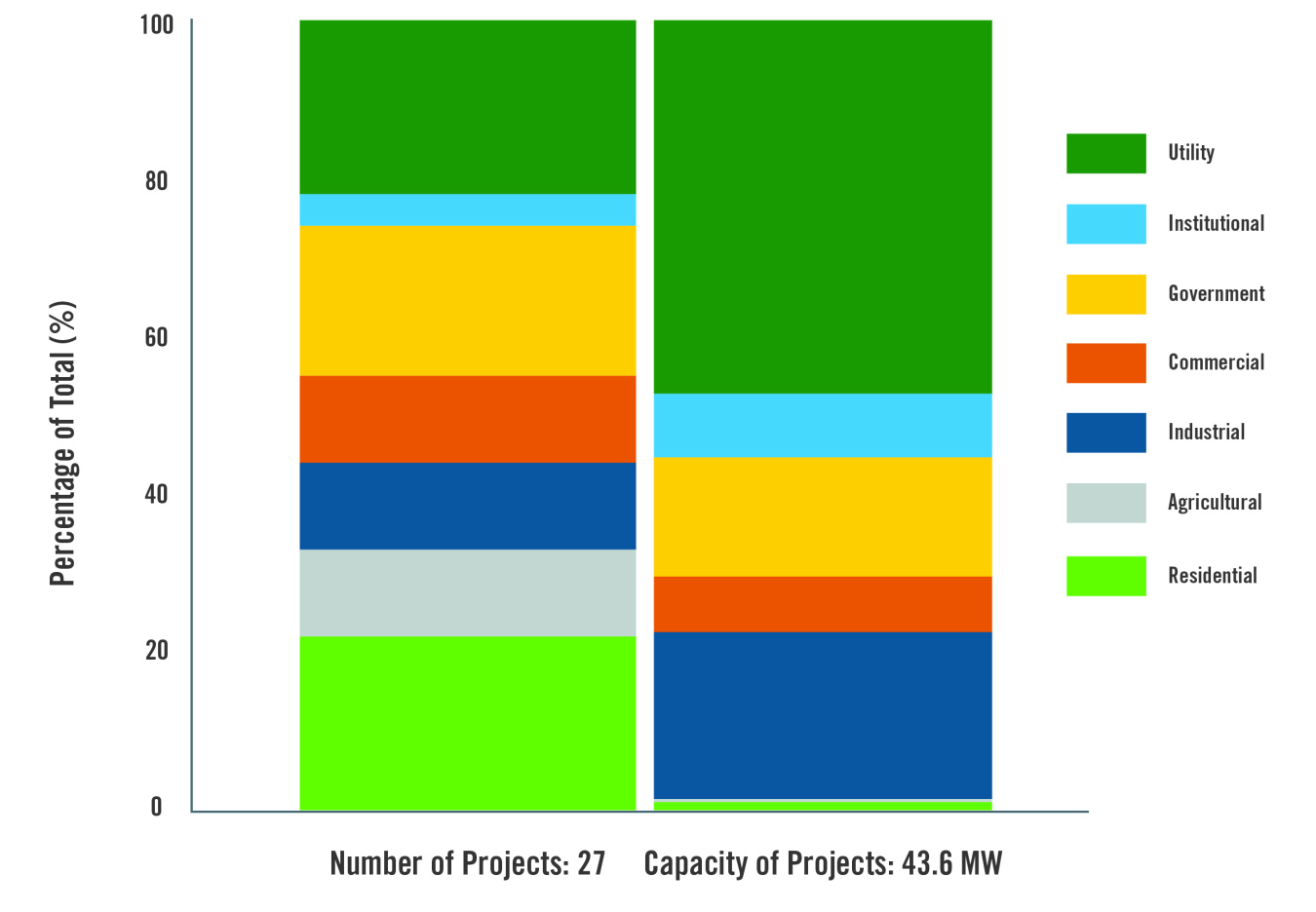There are many different types of distributed wind customer. Find out more about distributed wind and who uses it.
Wind Energy Technologies Office
August 12, 2019What is Distributed Wind?
Distributed wind systems are typically installed on a retail power customer (e.g. residential) or provider (e.g. distribution utility) site; such systems do not utilize the transmission system. As described in the U.S. Department of Energy’s Distributed Wind Market Report, distributed wind refers to all size classes of wind turbines that are connected at the distribution level of the electricity system, behind the customer meter, or in isolated microgrid (or off-grid) applications for a variety of customers. Distributed wind systems differ from centralized wind plants, which produce bulk power from dozens to hundreds of wind turbines, and deliver this power via transmission lines to distribution grids where it is sold to retail power customers. Wind turbines used in distributed wind projects can range in size from a 300-watt micro-turbine on a boat, to a 15-kilowatt turbine at a home, to a multi-megawatt turbine at a manufacturing facility or on the distribution grid.
Who Uses Distributed Wind?
There are many different types of distributed wind customers:
- Residential customers include remote cabins, private boats, rural homesteads, suburban homes, and multi-family dwellings.
- Agricultural customers include all types of farms, ranches, and farming operations.
- Industrial customers are facilities that manufacture goods or perform engineering processes (e.g., food processing plants, appliance manufacturing plants, and oil and gas operations).
- Commercial customers include offices, car dealerships, retail spaces, restaurants, and telecommunications sites.
- Governmental customers are non-taxed entities, such as cities, municipal facilities (e.g., water treatment plants), military sites, and tribal governments.
- Institutional customers are entities that may also be non-taxed and mainly consist of schools, universities, and churches.
- Utility customers can be investor-owned or rural electric cooperatives.
What Turbines Are Used In Distributed Wind?
These different customers use a variety of turbine models and sizes, depending on the application.
Large-scale turbines (greater than 1 MW in size) are commonly used for government, commercial, industrial, and utility projects. Small wind turbines (up through 100 kW in size) are predominately used by agricultural and residential customers. And within small wind, turbines less than 1 kW in size are commonly used in isolated microgrids that may include battery backup or other energy storage because the microgrid is not connected to a local distribution grid that could provide backup energy.
Breaking Down Distributed Wind's User Base
The below figure from the 2018 Distributed Wind Market Report shows the breakdown of customer types by number of projects and by capacity for 2018 projects where data were available. Distributed wind projects using large-scale turbines serving distribution utilities account for the majority (47%) of distributed wind capacity deployed in 2018. Commercial and industrial projects represented almost 29% of the total project capacity documented in 2018. Using smaller turbines, agricultural and residential customers accounted for just 1% of the documented capacity, though some small turbines—particularly for off-grid use—do not have available customer data and are not represented in this figure.

2018 distributed wind customer types by number and capacity of projects. | Figure 18 from the 2018 Distributed Wind Market Report.
Number of Projects Versus Capacity
Because some turbine sizes are more applicable for certain customer applications than others, distributed wind capacity across these customer types is not uniform. For instance, utility customers account for 47% of the total capacity but only 20% of the number of distributed wind projects documented in the sample. This disparity, illustrated in the figure, is determined by the scale of the project and the type of turbine used. While there may be many residential wind turbines deployed, if each of those turbines is small in capacity, the residential category will not account for a large percentage of the total capacity.
Learn more about the U.S. distributed wind market in the U.S. Department of Energy’s 2018 Distributed Wind Market Report.

